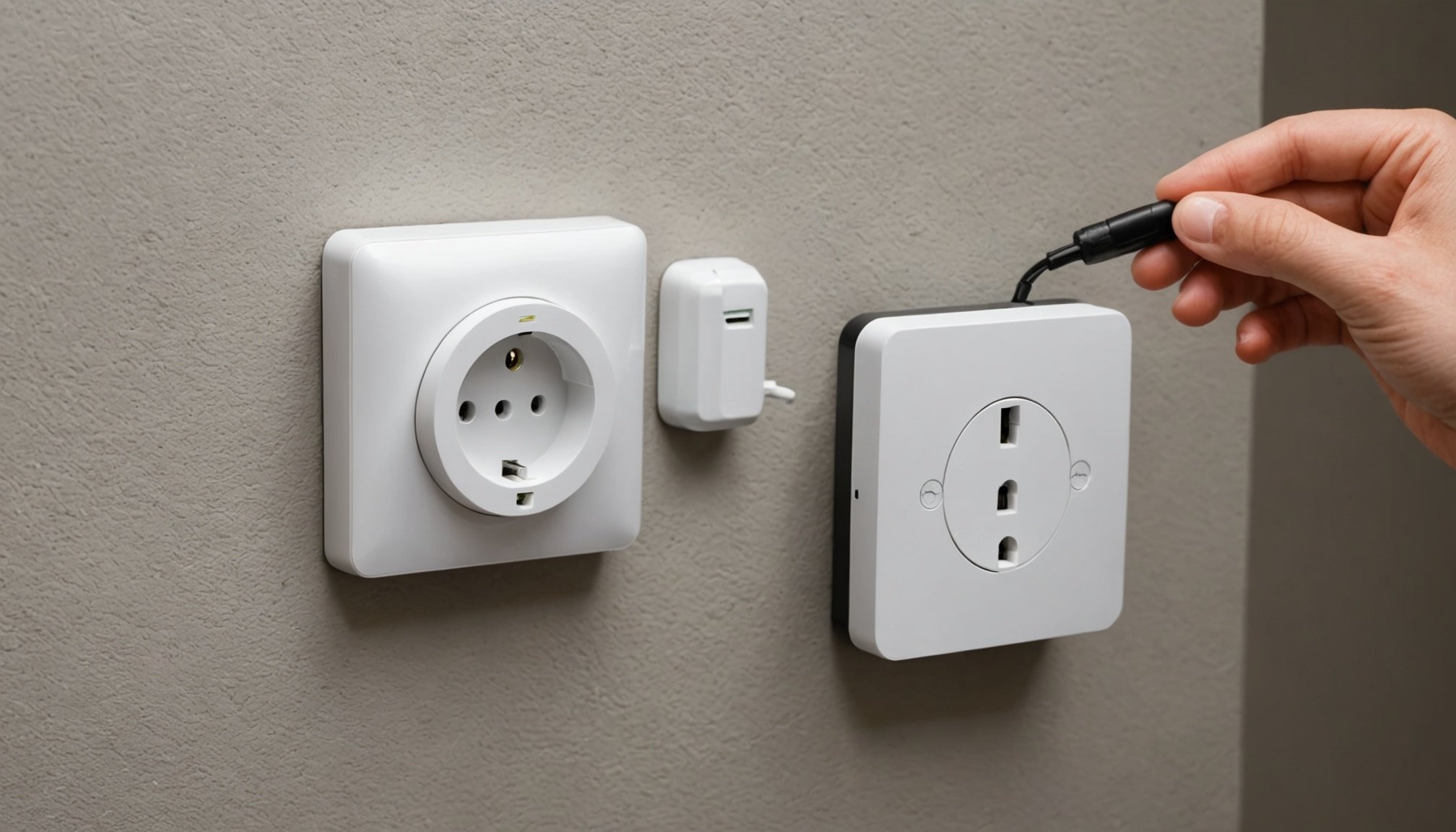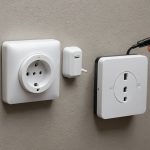Overview of Smart Plugs
Smart plugs have revolutionised the way we interact with household devices, bridging traditional home tech with modern connectivity. These handy gadgets convert ordinary devices into smart devices, allowing users to control them remotely through smartphones. This gives individuals the power to turn appliances on or off, schedule operations, and monitor energy usage with ease.
The benefits are substantial. By integrating smart plugs with smartphones, users gain enhanced control over their home environment. Imagine being able to manage lighting, heating, or other gadgets from anywhere, simply using an app. This not only adds convenience but also contributes to energy efficiency by ensuring appliances are only active when needed.
Also read : Elevate your home security: a smartphone guide to optimizing smart lighting solutions
There is a variety of smart plugs available on the market. Some feature Wi-Fi connectivity for remote access, while others rely on Bluetooth for proximity-based control. Options with voice assistant compatibility allow commands to be relayed via platforms such as Amazon Alexa or Google Assistant. Additionally, certain models offer advanced features like energy monitoring, timers, and surge protection.
These versatile devices empower homeowners to merge smart technology with existing electronics, paving the way for a more connected and efficient lifestyle.
This might interest you : Transform your smart home office: essential tips for streamlined equipment management using your smartphone
Preparing for Installation
Before diving into the installation process, ensure you’ve gathered all the required materials and tools. Typically, you’ll need a reliable smartphone setup and the smart plug itself. It might also be necessary to have a screwdriver handy, depending on your model.
Next, smart plug compatibility with your smartphone is crucial. Check the plug’s specifications to ensure it supports your device’s operating system, be it Android or iOS. Most modern smart plugs are versatile, but double-checking can save time and frustration.
Your Wi-Fi network needs to be set for a seamless smart plug connection. First, verify the network operates on a 2.4GHz frequency, as many smart plugs do not support 5GHz. Ensure your smartphone is connected to this network during setup, and note down your Wi-Fi password for a smooth installation process.
Following these steps will streamline your installation preparation, allowing for a quick and efficient process. With everything in place, you’ll be ready to enjoy the benefits of an interconnected smart home.
Step-by-Step Guide to Linking Your Smart Plug
It’s essential to ensure a seamless smart plug connection. These straightforward step-by-step guide instructions will facilitate an effortless setup with your smartphone app.
Downloading the Necessary App
Start by downloading the smart plug’s designated smartphone app. Ensure compatibility with your device’s operating system by checking app reviews and ratings. This app serves as the hub for your smart plug connection, enabling control and customisation of its features.
Creating an Account
After installation, open the app to create an account. This is a mandatory step for smart plug connection. Provide basic information and verify your email or phone number if required. This account allows you to access all functionalities and services linked to the smart plug.
Configuring Smart Plug Settings
Configuring the settings involves several critical tasks. First, confirm that the Wi-Fi settings on your smartphone app match your home network. Next, connect the smart plug to the app by following its on-screen instructions. Finally, test your initial connectivity to ensure the smart plug responds to commands. This step-by-step guide is crucial for a smooth setup and optimal use of your smart plug.
Troubleshooting Common Issues
When dealing with smart plugs, connection problems can be frustrating, especially during setup. Users may experience difficulties in identifying connection errors. The first step is to ensure your device is connected to a 2.4 GHz Wi-Fi network, as smart plugs often do not support 5 GHz bands. Double-checking the Wi-Fi password can also prevent incorrect credentials issues.
If the smart plug becomes unresponsive, resetting can be a straightforward solution. Unplug the device, wait for 10 seconds, and then reconnect it. If problems persist, a factory reset may be needed. Usually, this involves holding the reset button on the plug for around 10 seconds until the LED indicator blinks.
Alternatively, app settings may need resetting to resolve issues. Start by clearing the app cache in your device settings. If this doesn’t suffice, uninstall and reinstall the smart plug’s app. This ensures that the app software is fresh and compatible with any recent updates.
These troubleshooting steps are designed to tackle common issues, making it easier for users to resolve connectivity problems themselves. By following these solutions, users can manage their smart plugs effectively, restoring functionality without requiring professional intervention.
Advanced Features of Smart Plugs
Smart plugs offer a variety of advanced features that enhance home automation, making life more convenient and efficient. One of the key capabilities is automation. Users can set up automated routines where multiple devices work in harmony, triggered by specific conditions like time of day or presence detection. This ability to automate creates seamless scenarios for lighting, heating, and home entertainment systems, tailored to individual preferences.
Integrating smart plugs with voice control is another powerful feature. Compatibility with voice assistants such as Alexa and Google Home allows for hands-free operations. A simple voice command can turn on lights, activate appliances, or shut down devices, providing accessibility and enhanced control for users.
Furthermore, setting schedules is a practical aspect of smart plug functionality. Users can program schedules for devices to turn on or off at predetermined times, reducing energy consumption and improving security when away from home. Smart plugs can emulate presence by turning lights on and off, deterring potential intruders.
In conclusion, these features enable a customizable and efficient smart home environment, where automation and voice control play pivotal roles in enhancing daily routines.
Frequently Asked Questions (FAQs)
One common question about smart plug usage is how to troubleshoot issues across different brands. Many users find it helpful to refer to the manufacturer’s manual initially. If problems persist, resetting the device or ensuring that the smart plug is correctly connected to the network can often resolve issues.
Compatibility with various smartphone operating systems is a frequent inquiry as well. Most modern smart plugs support major operating systems such as iOS and Android. Ensure that the smart plug’s app is downloaded from a reputable source, like the App Store or Google Play, to maintain optimal functionality and security.
Security concerns are paramount for users integrating smart plugs with smartphones. It’s crucial to set strong, unique passwords and enable two-factor authentication where possible. Keep your plug’s firmware updated to protect against vulnerabilities. Regularly reviewing your home’s network security can further safeguard against potential threats.
If you have more detailed questions or need brand-specific guidance, reaching out directly to manufacturers can provide valuable support tailored to your smart plug model.
Recommended Products and Resources
When delving into smart home automation, choosing the right smart plugs is crucial. Among the recommended products, the TP-Link Kasa Smart Plug stands out for its affordability and user-friendly features. Another top choice is the Amazon Smart Plug, known for seamless integration with Alexa, which makes managing devices simple.
For those seeking detailed smart plug reviews, consumer reports are invaluable. They provide insights into each product’s performance and reliability, helping you make an informed decision. User feedback particularly praises ease of setup and connectivity, which are pivotal for seamless smart home integration.
To purchase these recommended products, it’s best to visit trusted online retailers like Amazon or the brand’s official website, ensuring warranty coverage and official support. Always verify seller authenticity before making a purchase to avoid potential inconveniences.
In the journey towards a smarter home, expanding your knowledge through additional resources is essential. Numerous online platforms offer comprehensive smart home automation tutorials. Websites like Smart Home Solver provide extensive guides on integrating devices, enhancing the overall efficiency and convenience of home automation systems. These resources equip users with the necessary skills to optimise their smart home setup successfully.











